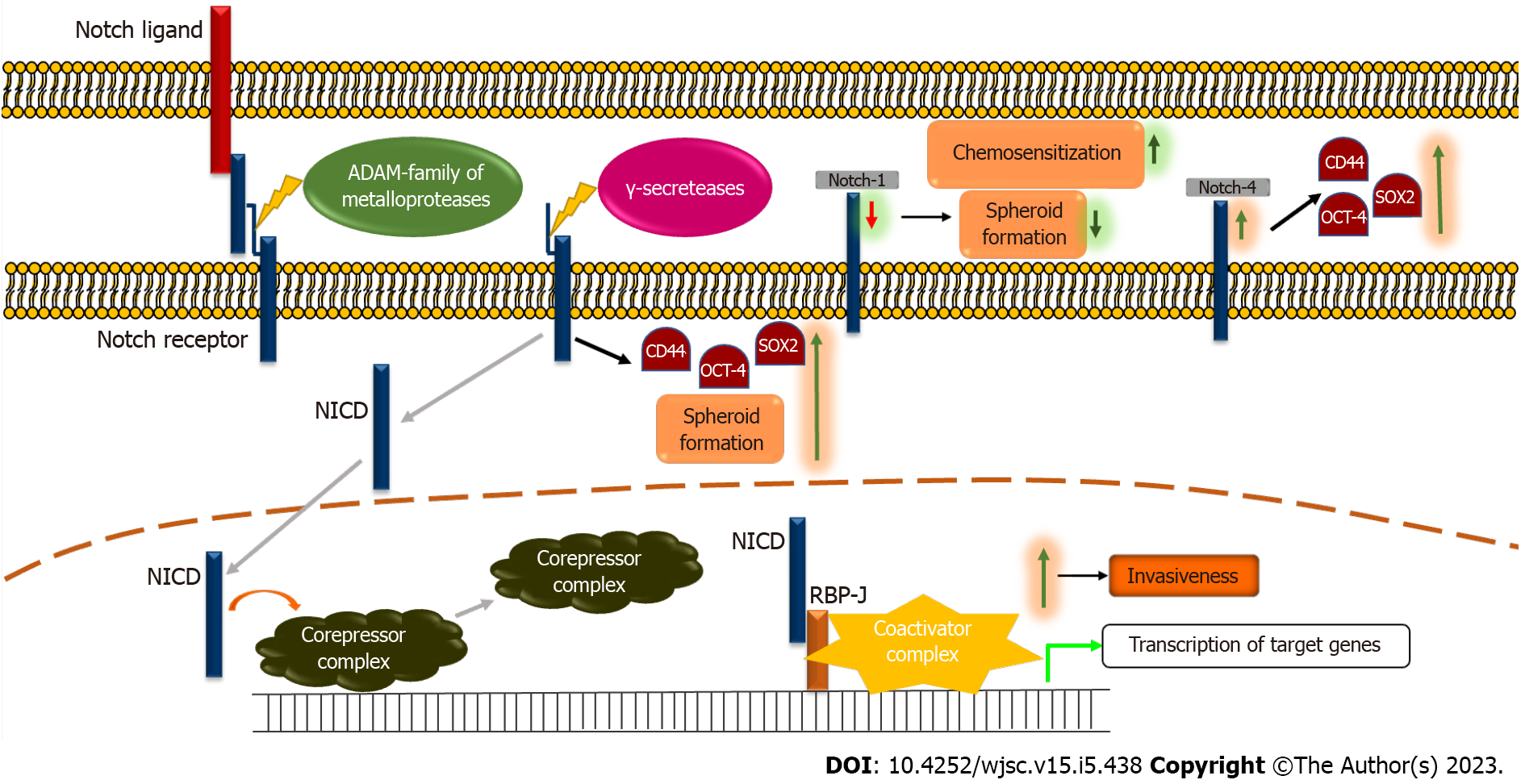Copyright
©The Author(s) 2023.
World J Stem Cells. May 26, 2023; 15(5): 438-452
Published online May 26, 2023. doi: 10.4252/wjsc.v15.i5.438
Published online May 26, 2023. doi: 10.4252/wjsc.v15.i5.438
Figure 3 The Notch signaling pathway and cancer stemness.
In absence of the Notch ligand, the Notch pathway is in the inactivate state. The binding of ligand to the Notch receptor leads to cleavage by ADAM-family metalloproteases releasing the extracellular domain of the receptor. Further, the receptor is cleaved by γ-secretase leading to the formation of the Notch intracellular domain (NICD), thereby activating it. The NICD then translocates to the nucleus and releases inhibition on the target genes by dissociating the corepressor complex and forms a complex with RBP-J and co-activator complex thereby activating the transcription of target genes. Further, knockdown of Notch-1 expression has been shown to increase chemo-sensitization and decrease the spheroid formation ability of tongue squamous cell carcinoma (TSCC) cells[64]. An increase in Notch-4 levels increases stemness markers such as CD44, SOX2, and OCT-4 in TSCC cells[66]. NICD activation has been shown to increase levels of CD44, OCT-4, and SOX2 in TSCC cells[65]. Activation of the Notch pathway increases the invasiveness in TSCC cells[62,63,66,67]. NICD: Notch intracellular domain.
- Citation: Joshi P, Waghmare S. Molecular signaling in cancer stem cells of tongue squamous cell carcinoma: Therapeutic implications and challenges. World J Stem Cells 2023; 15(5): 438-452
- URL: https://www.wjgnet.com/1948-0210/full/v15/i5/438.htm
- DOI: https://dx.doi.org/10.4252/wjsc.v15.i5.438









